Contents
The taste of redcurrant is usually associated with sour berries. However, there are varieties that are the complete opposite. One of them is sugar currant. The name already says that the gardener should expect sweet berries if he plants bushes on his site. A description of the redcurrant variety Sugar photo, reviews of summer residents will help to get to know the culture better.
The main features of the variety
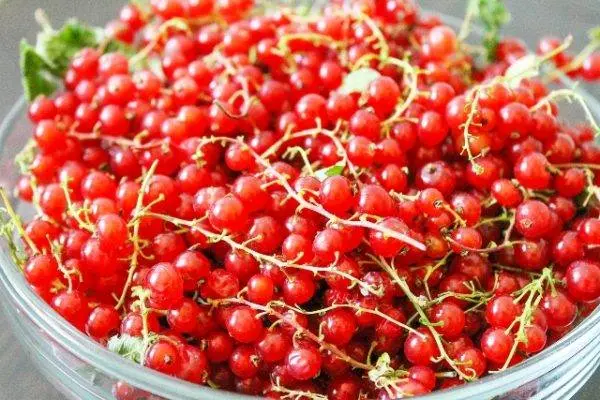
By its origin, red currant Sugar is a hybrid. The culture was bred by domestic breeders. The shrub grows branched with straight shoots. The leaves are five-pointed, with teeth along the edges. The kidneys are rounded, slightly elongated, brown in the undissolved state.
Flowers are collected on brushes. The shape resembles cups or saucers. Petals are yellow with a green tint. A ripe bunch is stretched up to 9 cm long. An average of 20 berries are tied on each brush. Ripe fruits turn bright red. The berries are sweet, fragrant, tasty fresh and excellent for processing.
Better to get acquainted with the characteristics of currants will help the dignity of the variety:
- the yield of the Sugar variety with good care reaches 7 kg per bush;
- the decorativeness of the bush allows you to decorate the site, plant hedges;
- berries have dessert properties;
- the variety is considered winter-hardy, tolerates severe frosts, is not afraid of temperature fluctuations;
- a long period of fruiting, lasting from early July to late autumn;
- the variety does not require complex care;
- bushes bear fruit without reducing the yield up to 25 years;
- redcurrant is rarely affected by pests;
- berries collected in clusters can be stored and transported for a long time.
Jam, juice, jams are prepared from the red fruits of the Sugar variety. Berries are frozen or dried for compotes. Due to the high content of sugar, overripe fruits make good wine.
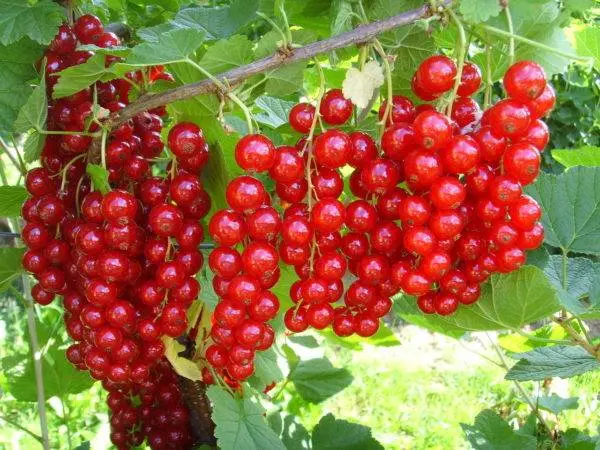
Of the shortcomings, the average size of the berries stands out. The second negative feature can be called a small percentage of self-pollination – 30%. The variety is susceptible to anthracnose disease.
The red-fruited variety Sugar tolerates cold more easily than blackcurrant. Such characteristics make it possible to grow a crop in cold regions and even Siberia. For better survival, seedlings are planted in September. Planting time for warm regions can be shifted to October. Spring landing is carried out in March, but look at the weather conditions.
Autumn seedlings of red currant varieties Sugar take root better. Before winter, they have time to take root. Hardening will occur in the cold. In spring, currants will grow with full force.
Selection of seedlings

The sugar currant is propagated by seedlings. The development of the bush and the future yield depend on the quality of the planting material. The choice of a seedling of Redcurrant Sugar takes into account the following nuances:
- A good seedling root system is identified by a light brown color and a length of at least 15 cm. The bundle should consist of many thin threads and the main root.
- The aerial part of the sugar currant seedling is examined for the absence of dry buds, damage to the bark, spots, growths of bumps.
- The height of the aerial part of a well-developed seedling is about 40 cm.
It is better to buy currant seedlings in nurseries. Even with mail forwarding, one can hope that a healthy bush will grow from the planting material. In nurseries, the conditions for storing seedlings are observed, which guarantees a high percentage of survival.
Place for planting
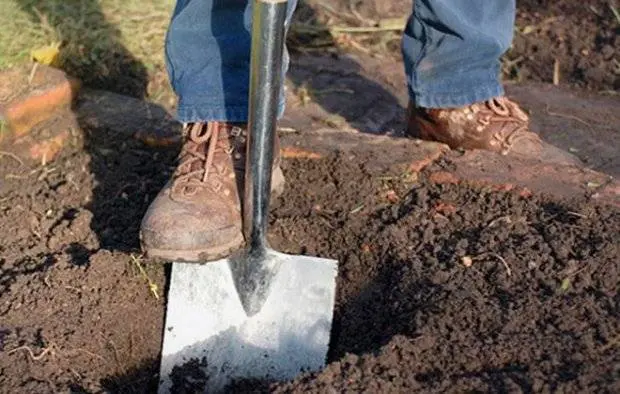
Variety Sugar grows well on sandy soil or light loamy soil. Pure clay and acidic soil inhibits the root system of the shrub. Currants grow poorly in such areas, bring little yield and eventually disappear.
If groundwater is high on the site, embankments will have to be erected. It can be a whole raised bed or separate hills for each bush. The root system of the Sugar currant variety develops in the upper layers of the soil, so a 40 cm thick mound will be enough for it.
Redcurrant loves good light and sunlight. The area must be well ventilated. Free air movement reduces the risk of powdery mildew damage to bushes.
To protect against drafts, seedlings are planted near buildings, solid fences and other structures.
Rules for planting seedlings

Red currant seedlings take root well during spring and autumn planting. If there is a choice, then the second option is preferable for all varieties, including Sugar. September is considered the best month for landing. Before the onset of frost, the currants will have enough time for rooting. The Sugar variety is distinguished by compact bushes, and a distance of 1,2 m between seedlings will be enough.
The landing process consists of the following steps:
- For a seedling, they dig a hole 40 cm deep, 50–60 cm in diameter. On plantations, currants are planted in rows, and instead of holes, they break through a trench of the same depth.
- A nutrient mixture is prepared from fertile soil and compost. If the site is located on acidic soil, add chalk or old clay plaster. Pour a bucket of the finished mixture into each well and pour half a bucket of water.
- When the liquid is absorbed, the seedling is set at an angle of 45о. The root system is straightened along the bottom of the hole and covered with earth. The soil level is adjusted 5 cm above the root collar. Deepening helps to grow basal shoots from buried buds.
- Loose soil around a seedling of red currant is pressed by hand. 3 buckets of water are poured alternately into the hole. If, after absorbing the liquid, roots appear on the surface, they are covered with loose soil. Scatter mulch from sawdust or peat on top.
At the end of the planting of all seedlings, the top is cut off from each currant, about a third of the length.
The video tells about the correct planting of red currants:
Seasonal care
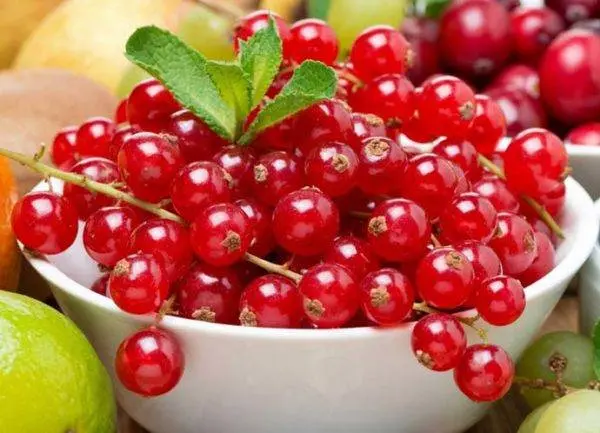
Getting a good harvest depends on the care of the currant. The Sugar variety does not require much time to be devoted to it, but elementary watering, weeding, fertilizing and pruning must be done.
Watering
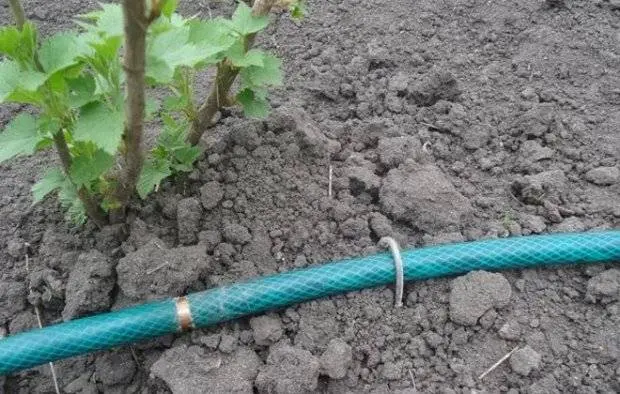
Many varieties of currants are loyal to watering, but they love sugar water. Waterlogging of the soil should not be allowed. Water is added just enough so that the earth around the bush is saturated to a depth of 50 cm.
Water is poured directly under the root. Do not pour over the leaves in the heat. It is unacceptable to apply sprinkling during flowering. The frequency of watering is regulated according to weather conditions. In case of drought, 5 buckets of water are poured under an adult bush every 10 days. In cool and humid summers, the frequency of watering is increased by 20 days.
Weeding and loosening the soil
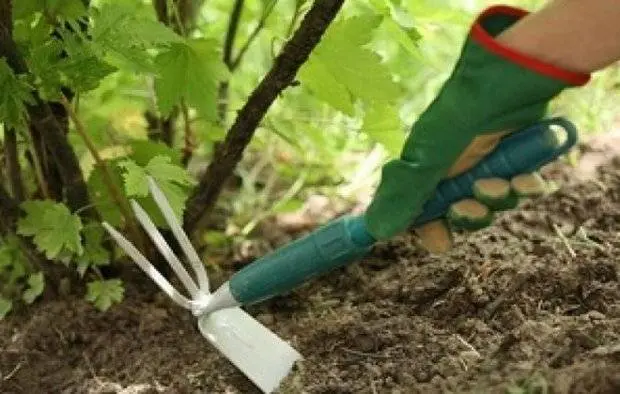
Under the bushes of red currant varieties Sugar should always be kept clean from weeds. Weed the soil with a chopper when fine grass appears, preventing it from taking root. In spring and autumn, be sure to loosen the soil at the same time as top dressing. Mulching will help simplify soil care. A thick layer of peat or sawdust will retain moisture, prevent dry crusting, and reduce weed growth.
Application of fertilizers
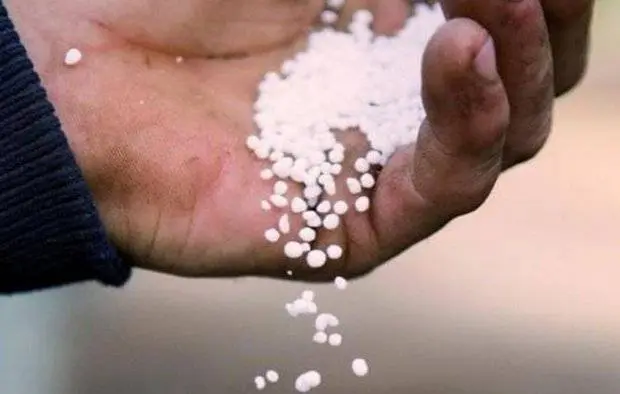
The first two years, red currants can not be fed. The bushes will have enough nutrients originally introduced during planting. Top dressing begins in the third year. Each bush is fertilized with a solution of nitroammophoska. A matchbox of dry matter is diluted with 10 liters of water.
The Sugar variety responds well to nitrogen-containing fertilizers. 1 m2 earth contribute 10 g of saltpeter or urea.
Shrub formation
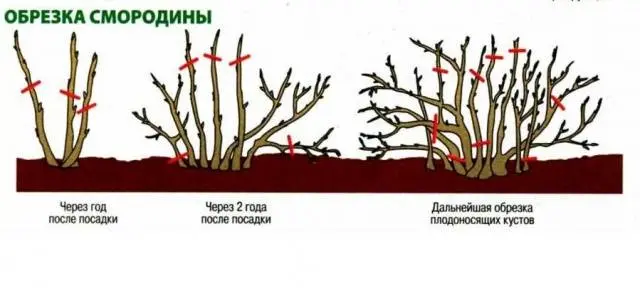
By the autumn of the next year after planting, 3-4 branches should grow from the seedling. They are shortened with secateurs, leaving processes with four buds. In the spring, fruit-bearing branches and young shoots will grow from them. Further formation follows a similar principle. The result should be a bush with 15-20 fruiting branches. Pruning is carried out in the fall, and in the spring only frozen and damaged shoots are removed.
Preparation for wintering
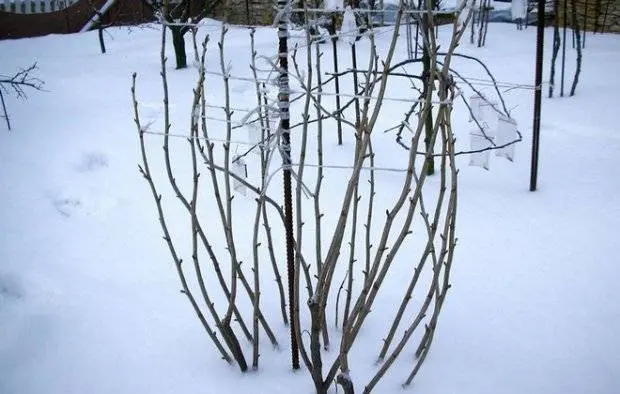
Variety Sugar tolerates cold well without additional shelters. It is enough to warm the roots with a mound of earth. The bush itself can be tied with twine to protect it from breaking snow drifts. Additionally, currants are tied to any support, for example, reinforcement driven into the ground. For the northern regions, additional protection can be made with agrofibre shelter. The film cannot be used, as in places of contact the bark of the branches will get burns from the cold.
Reviews
About sugar currant reviews are more positive. The culture is in demand by summer residents and small farms that grow berries for commercial purposes.









